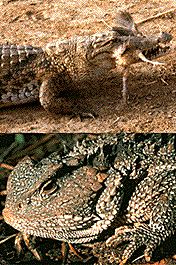Classification and evolution - What are the two principles used to classify species?

The phenetic principle of classification
In biology, one main method used to classify species into groups is the phenetic, or phenotypic, method. The phenetic method groups species according to their observable phenetic attributes: if two species look more like each other than either does to any other species, they will be grouped together. The full classification consists of a taxonomic hierarchy of levels, such that the members of different groups at higher and higher levels look decreasingly similar to one another. For example, a wolf and a dog (same genus) look phenetically more alike than do a wolf and a dolphin which are in the same Class.
Nothing needs to be known about evolution in order for species to be classified phenetically. The species are grouped by their similarity with respect to observable attributes alone, and the same principle can be applied to any sets of objects, either living or non-living.
A problem with the phenetic principle is that characters can conflict. As the image shows, in many ways (leg number, physiology and external surface) lizards and crocodiles are more closely related than birds. However, as the following animation shows, if we examine gaits then birds and crocodiles are more closely linked.
| Next |



